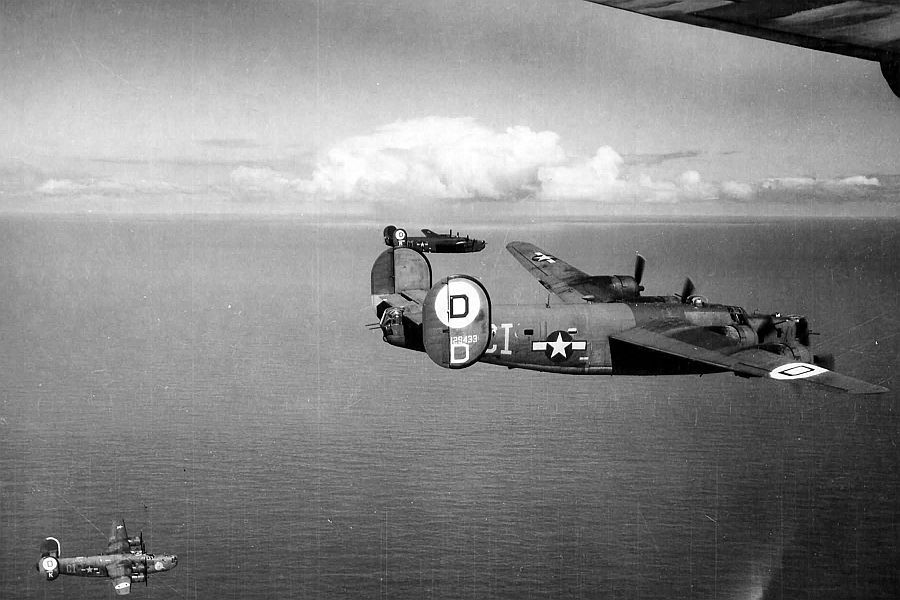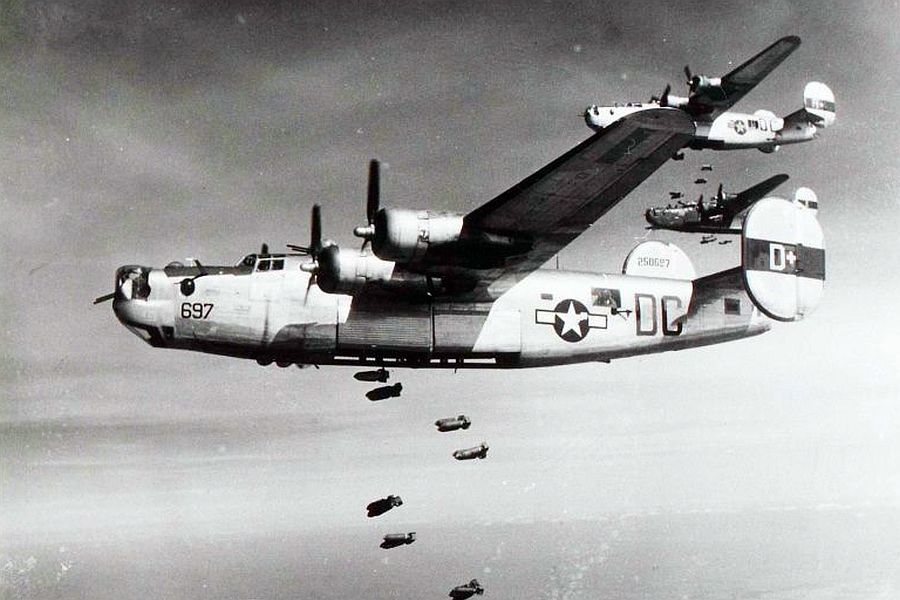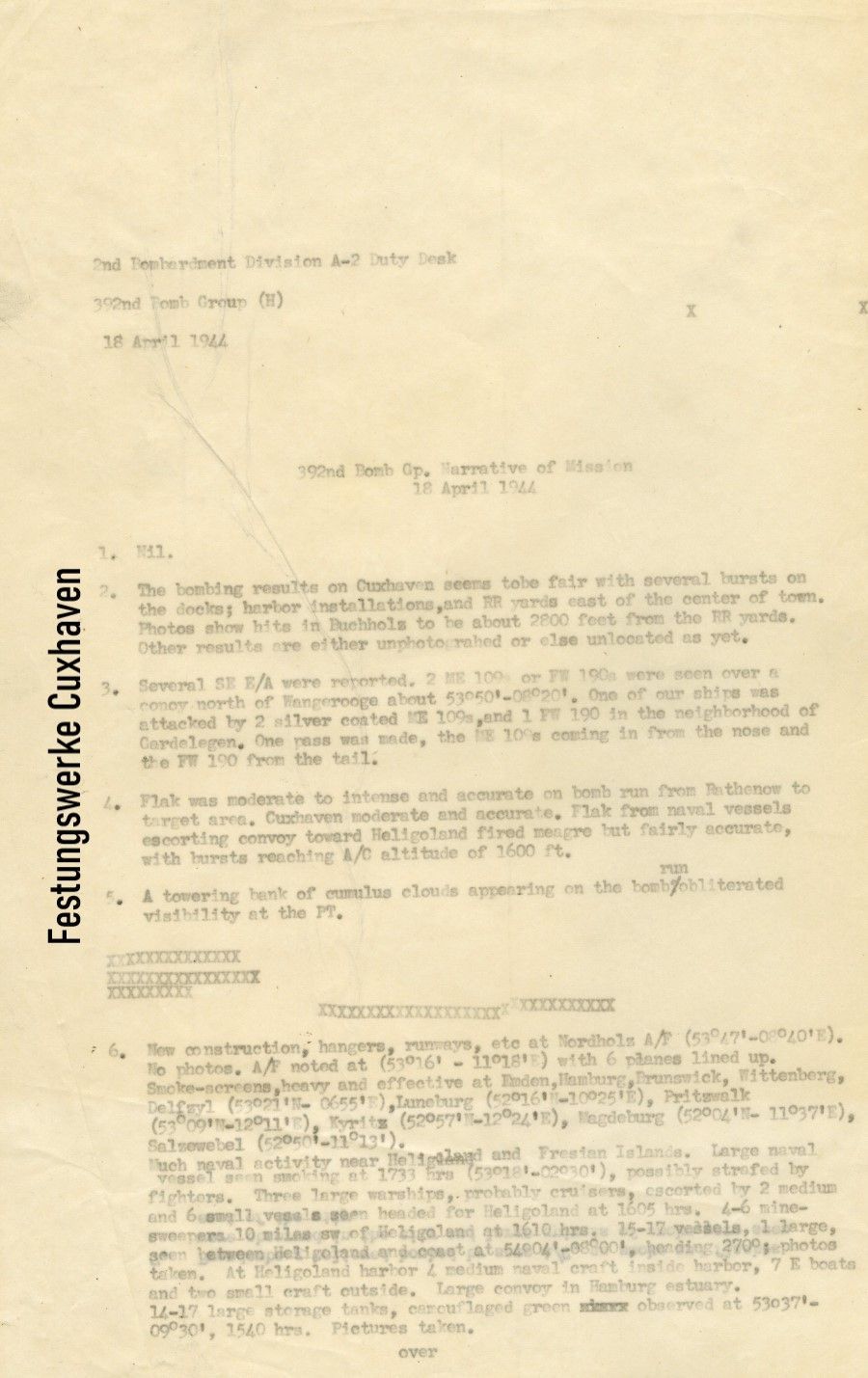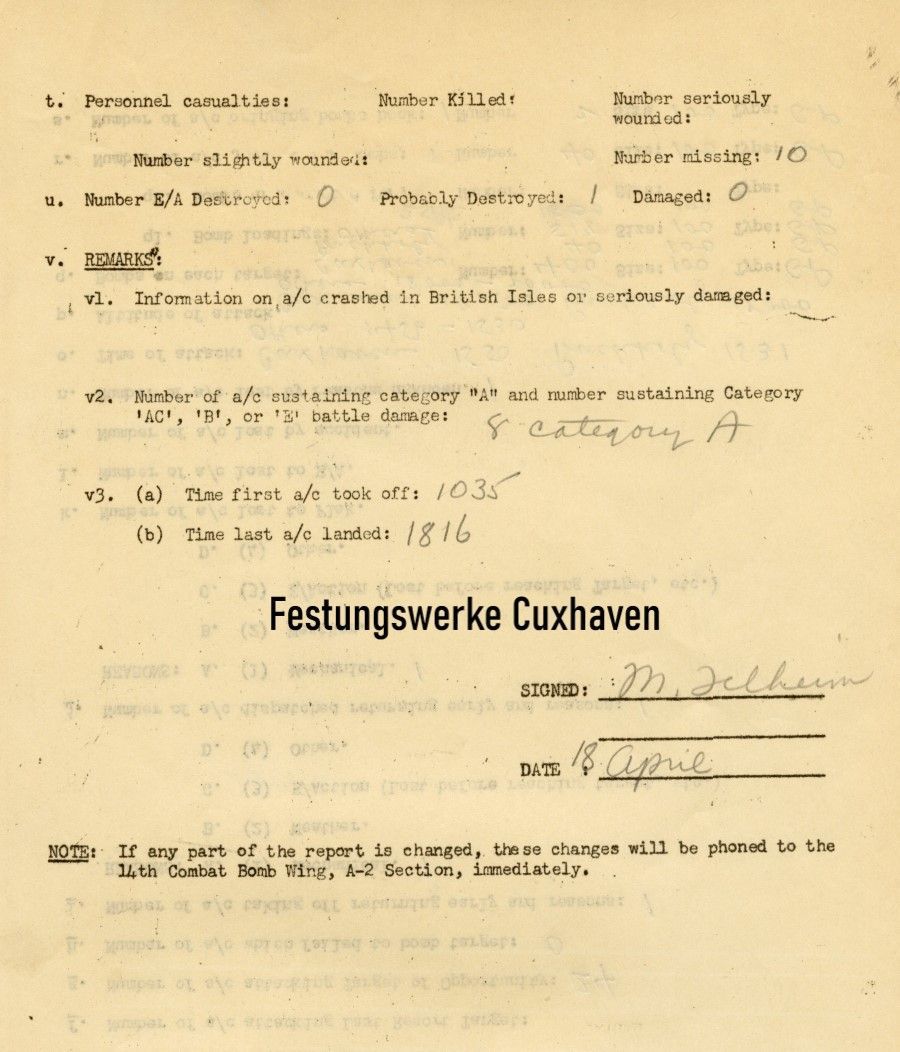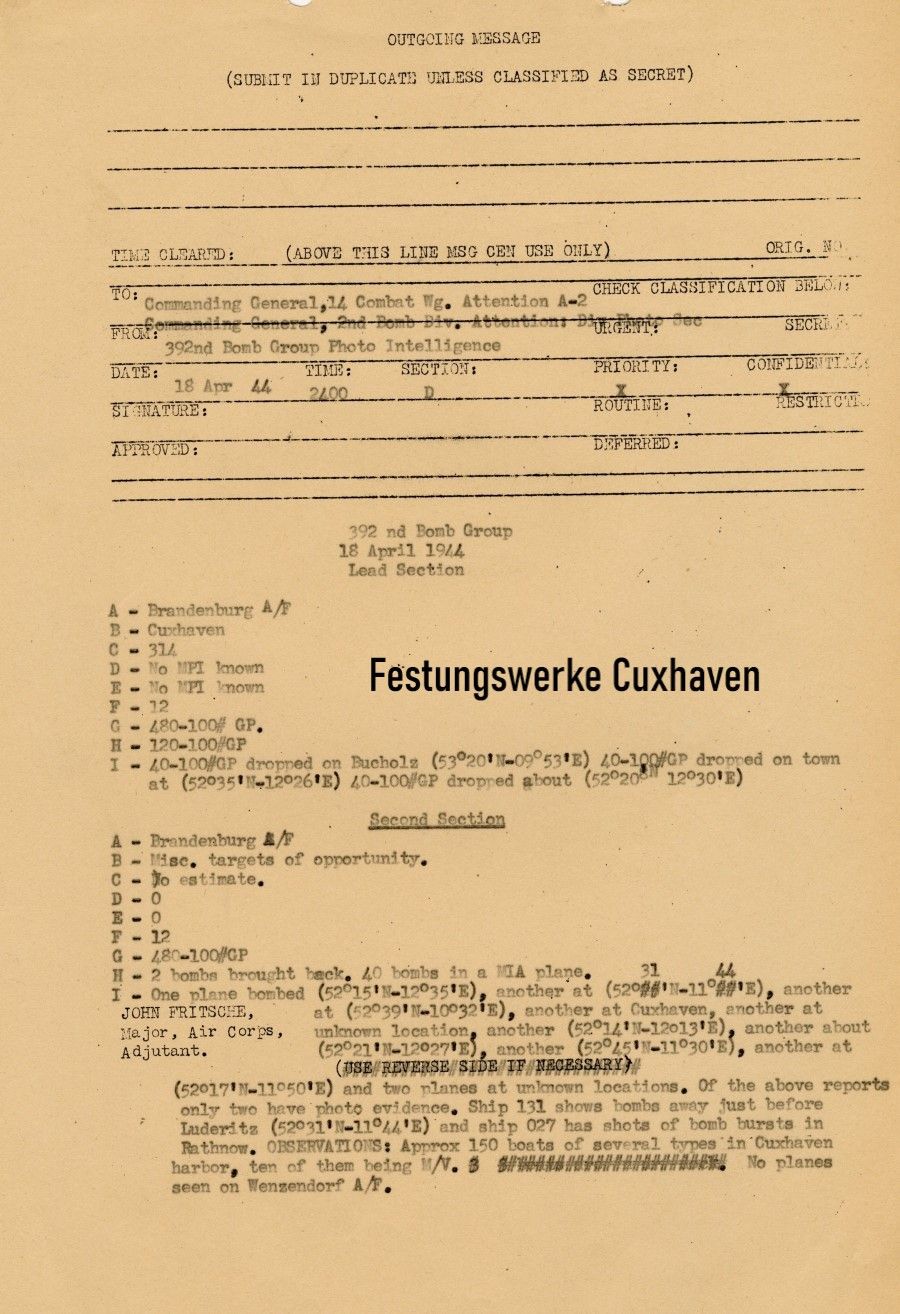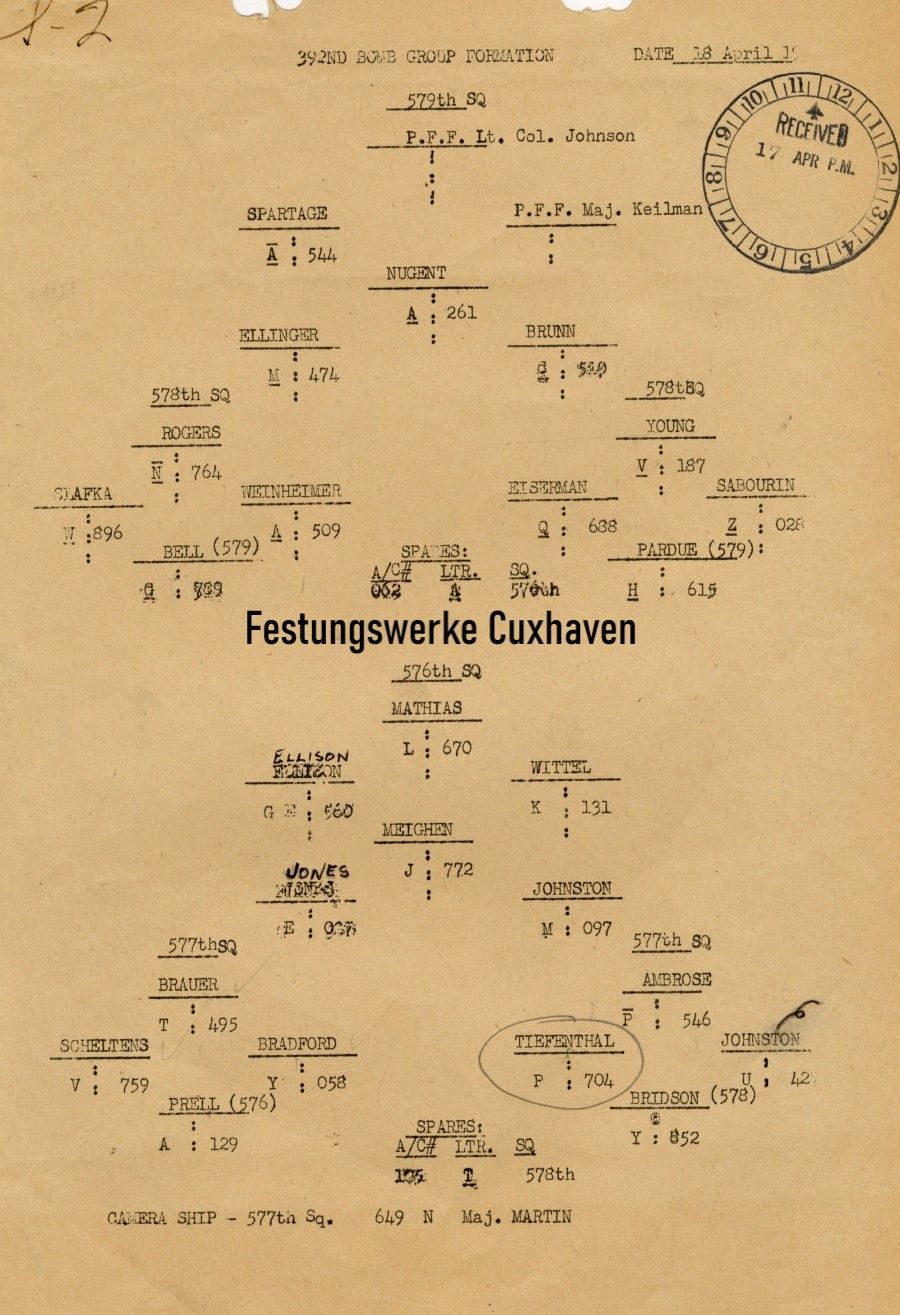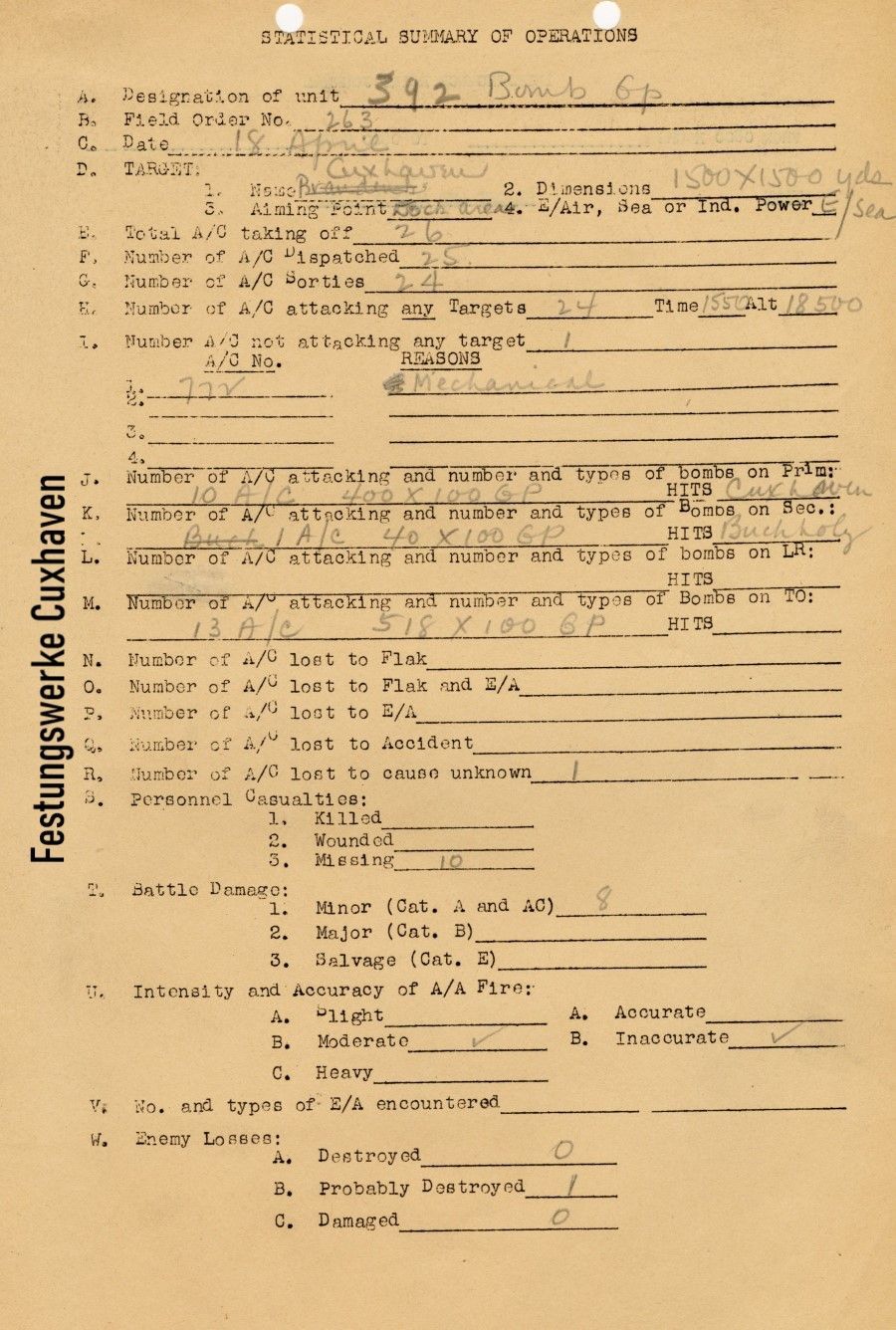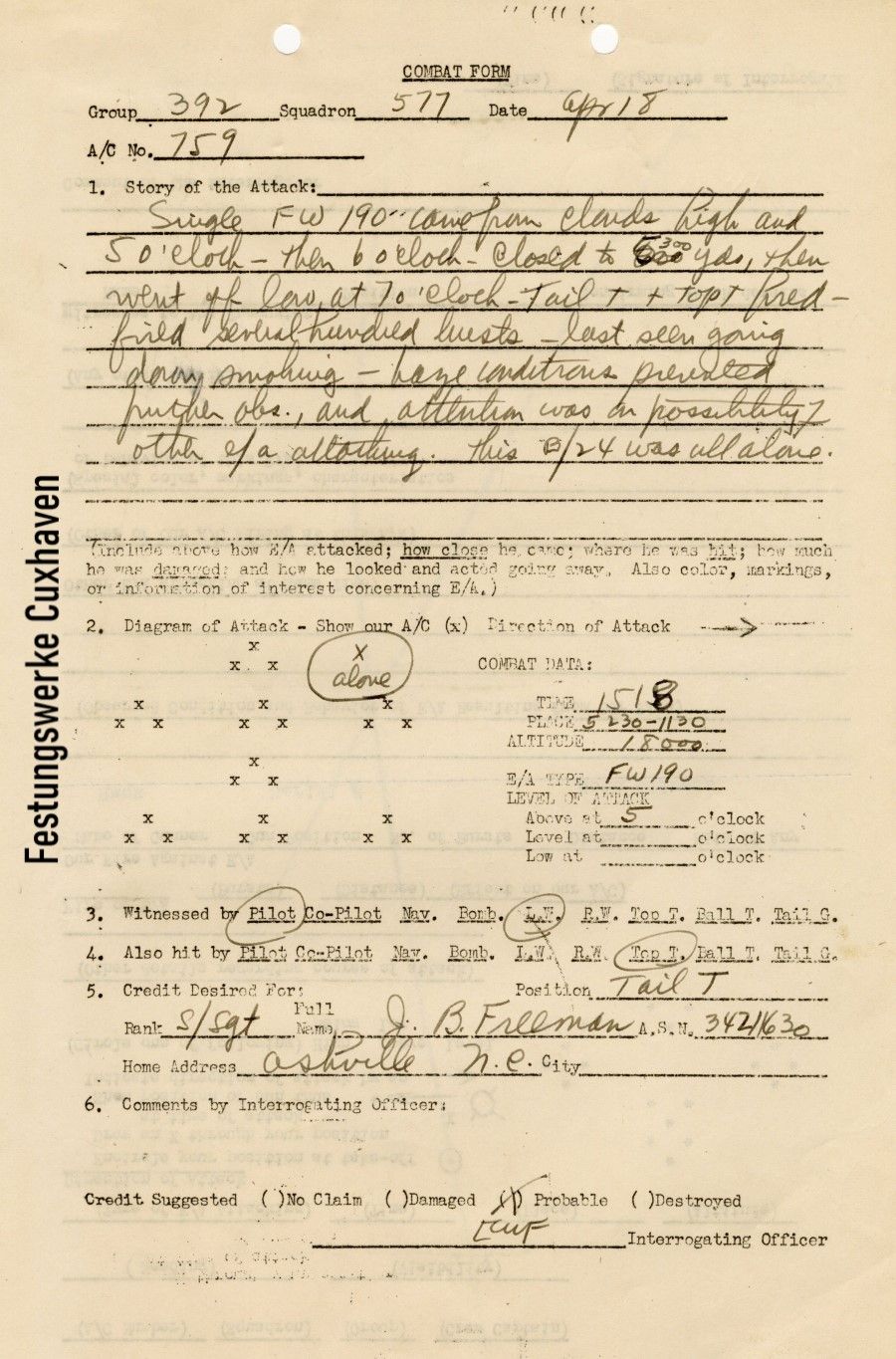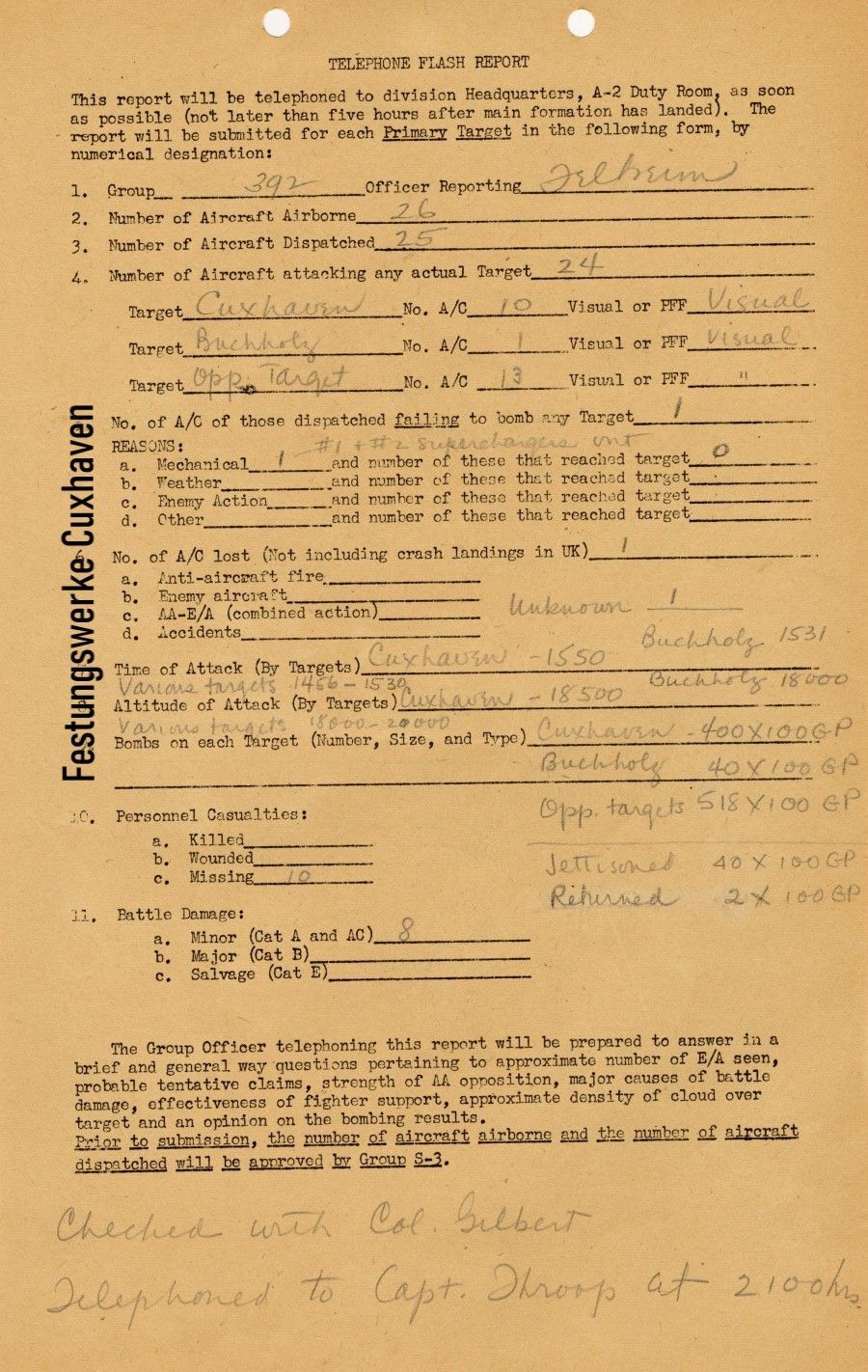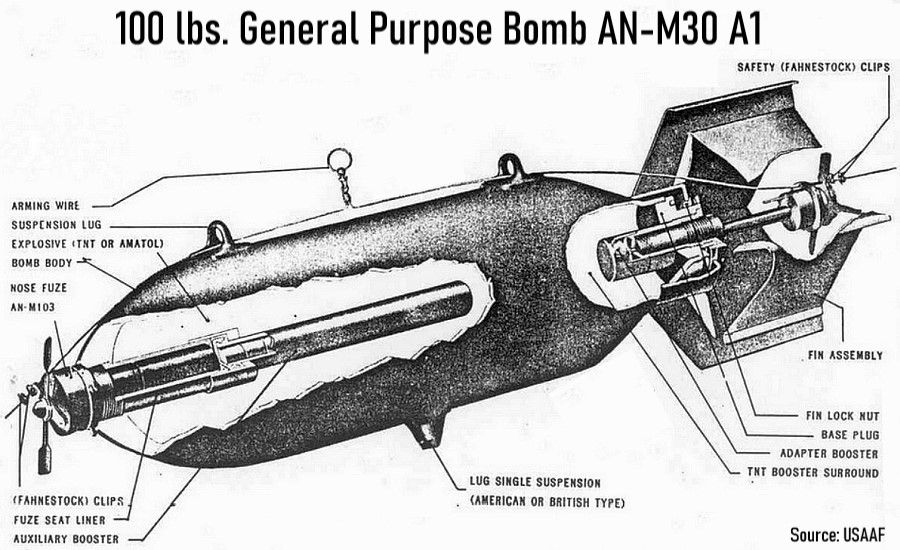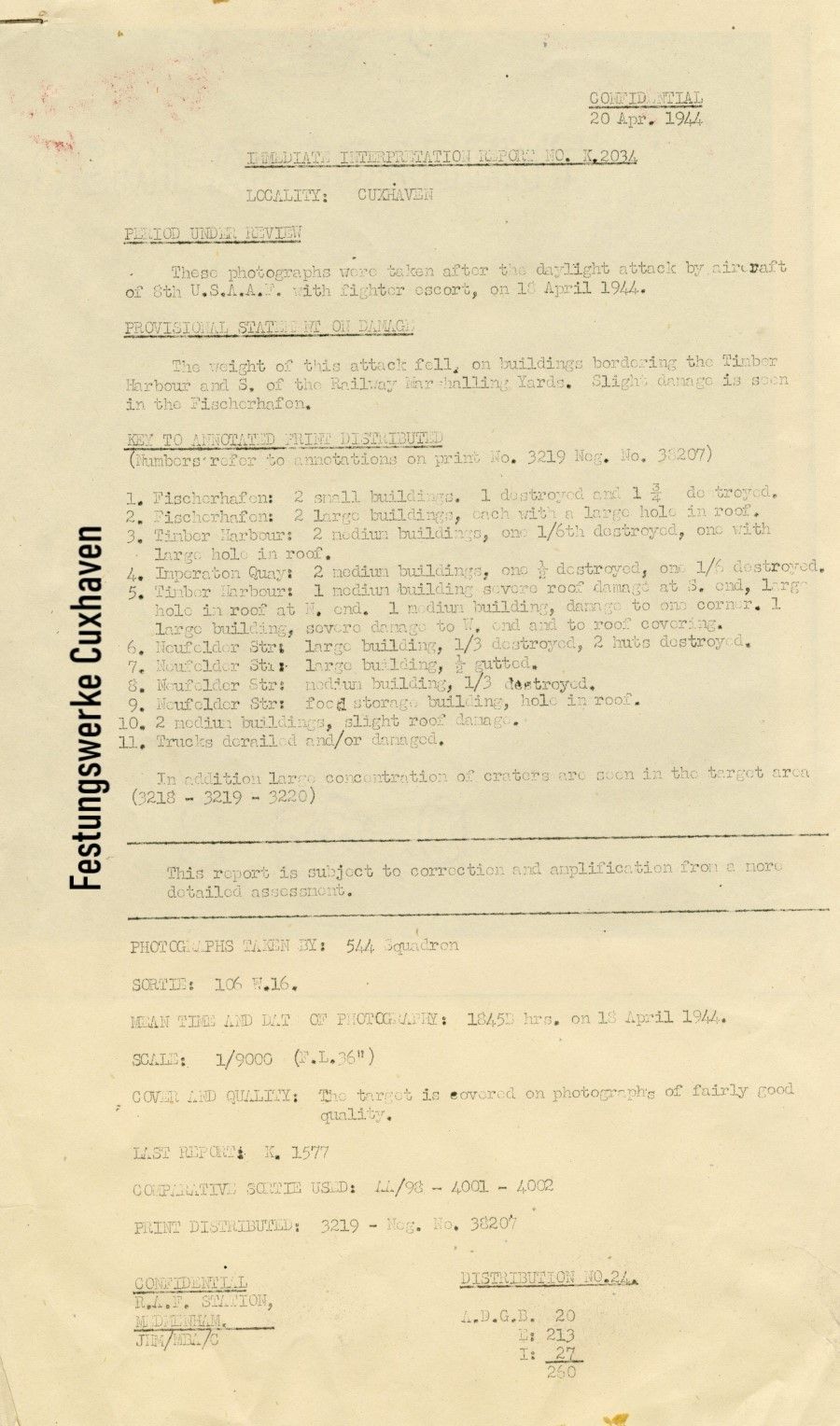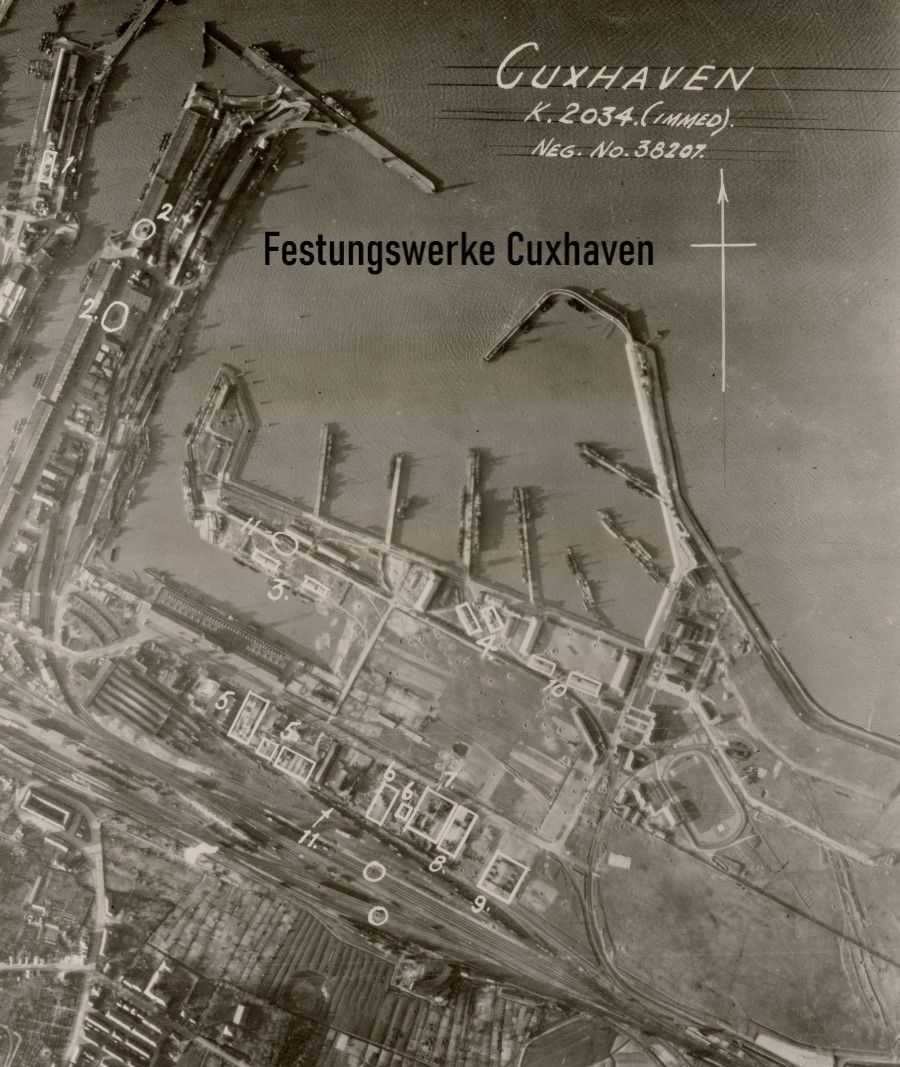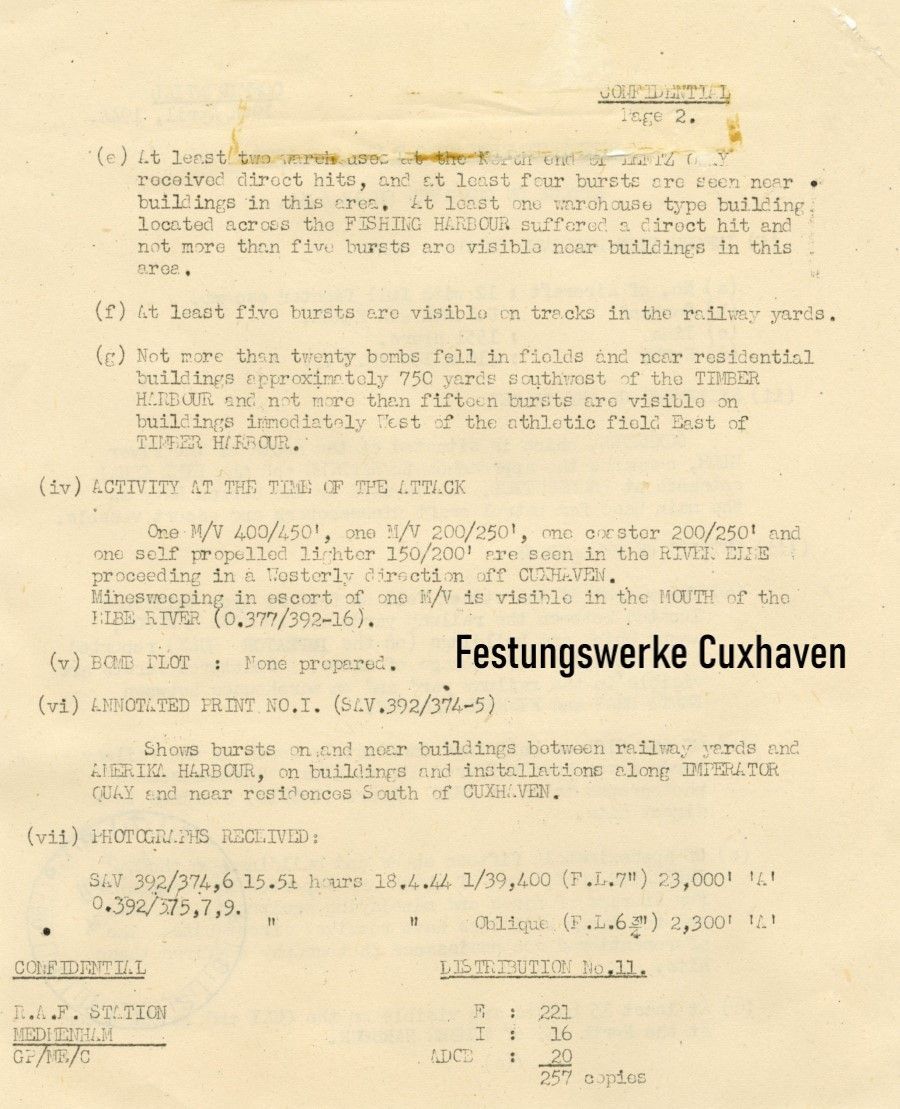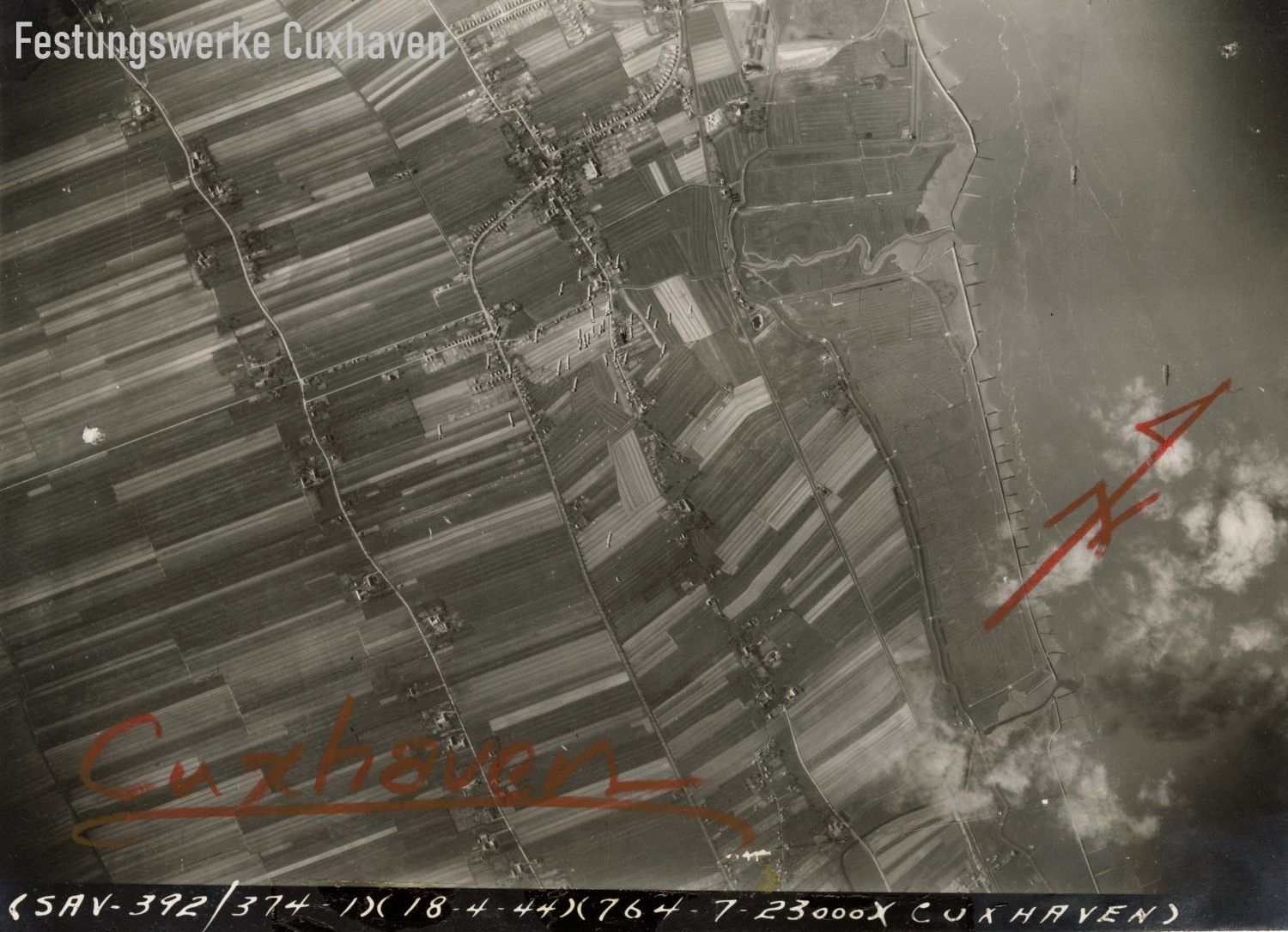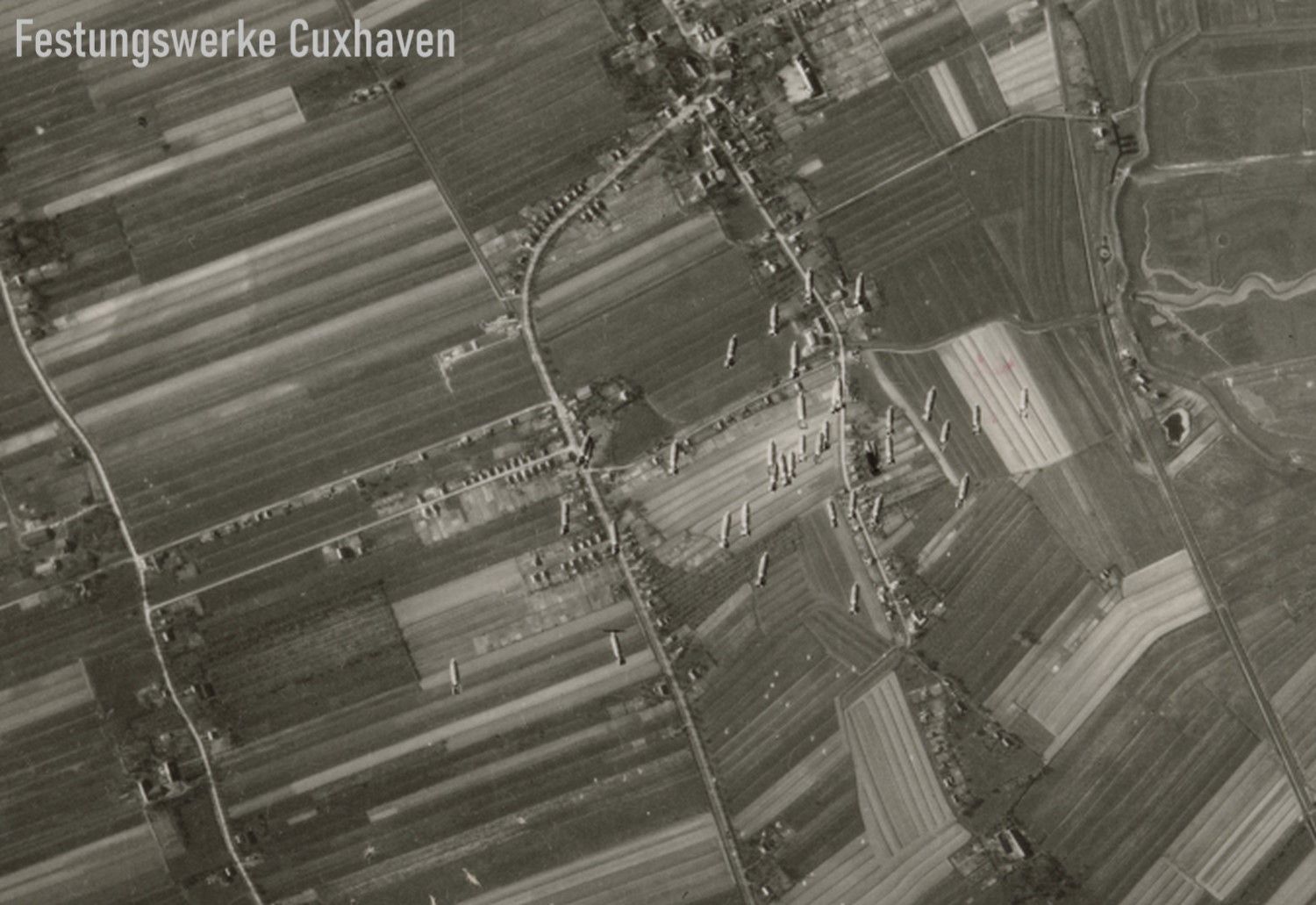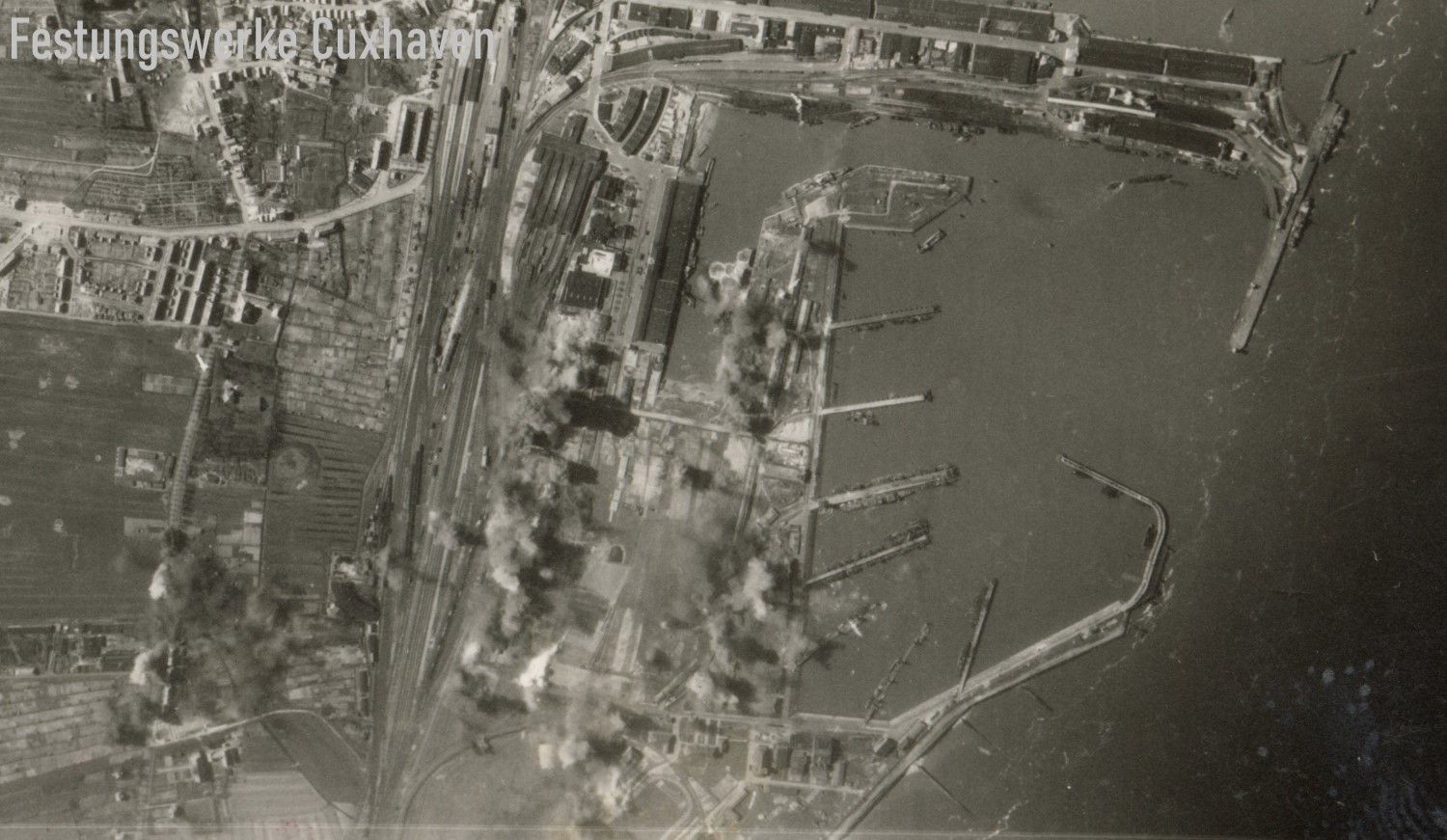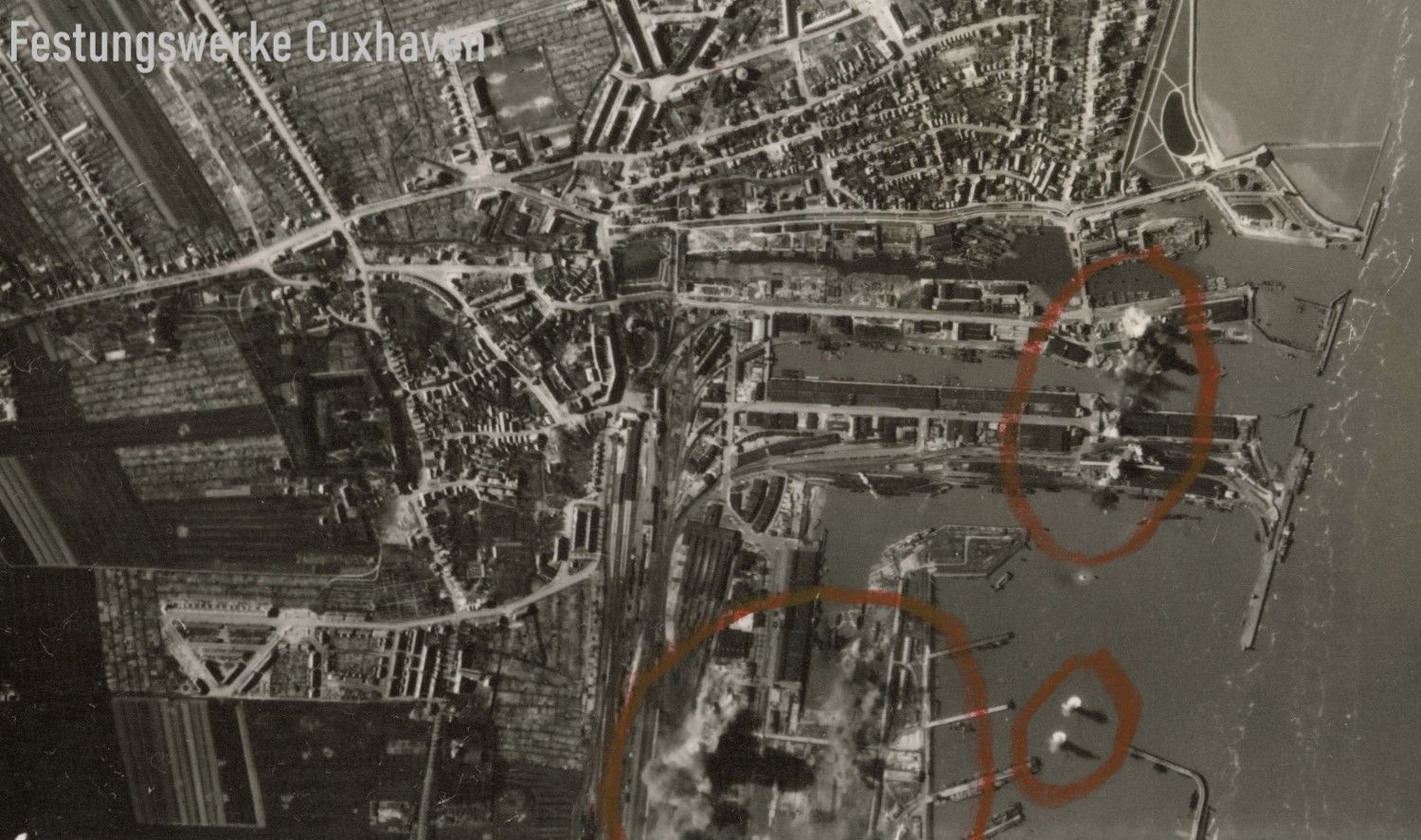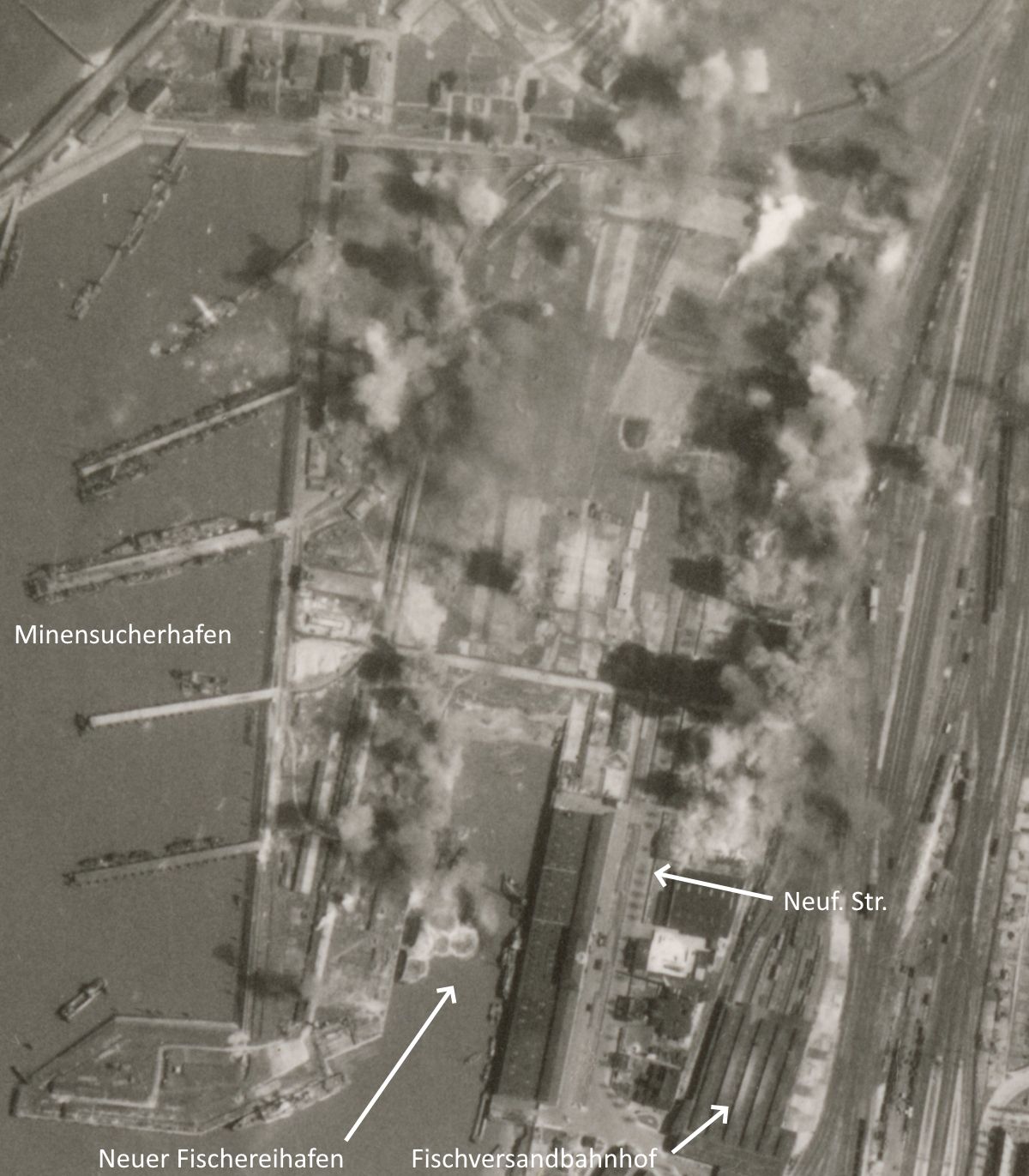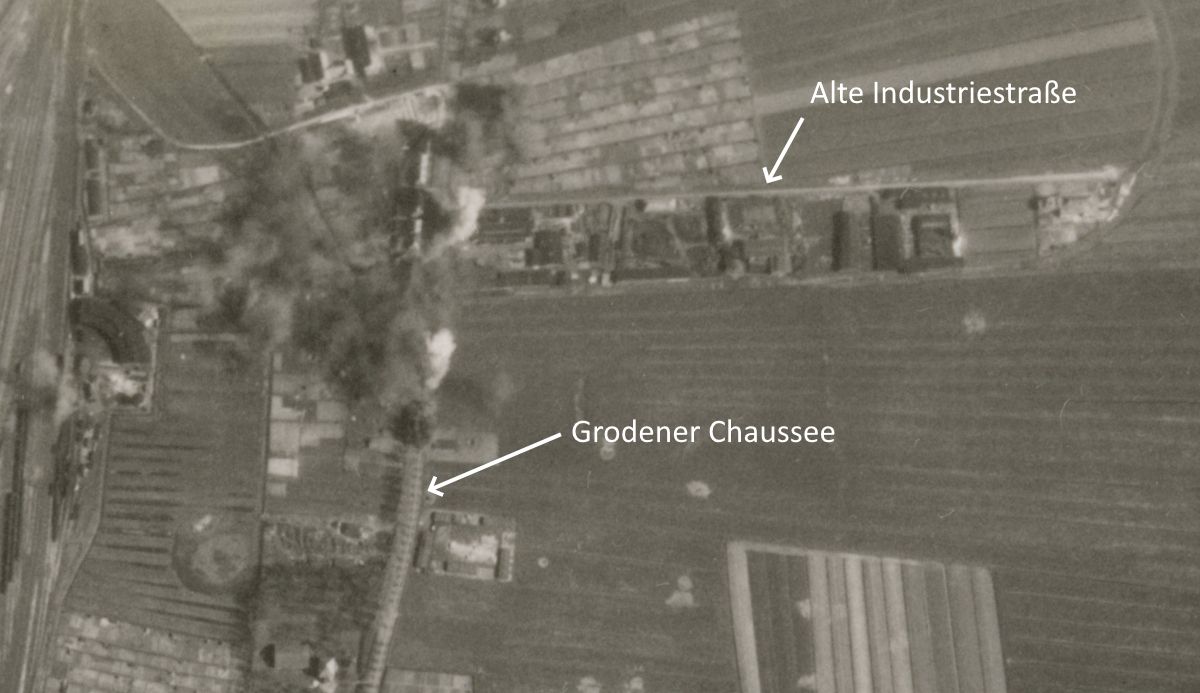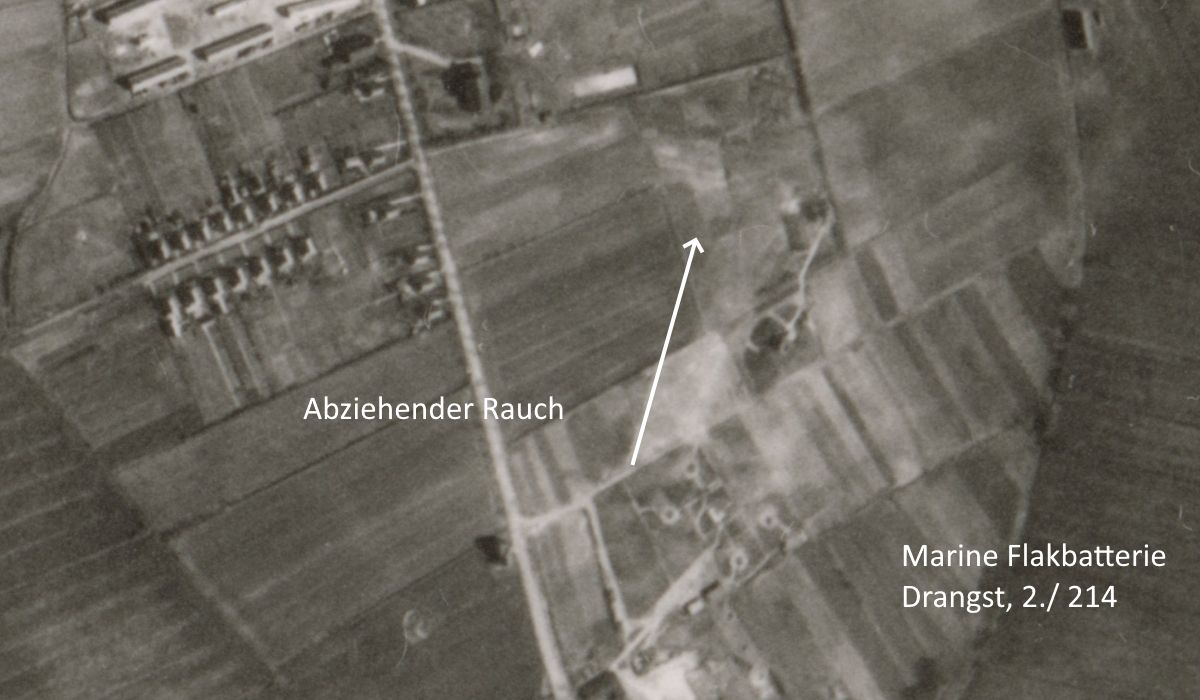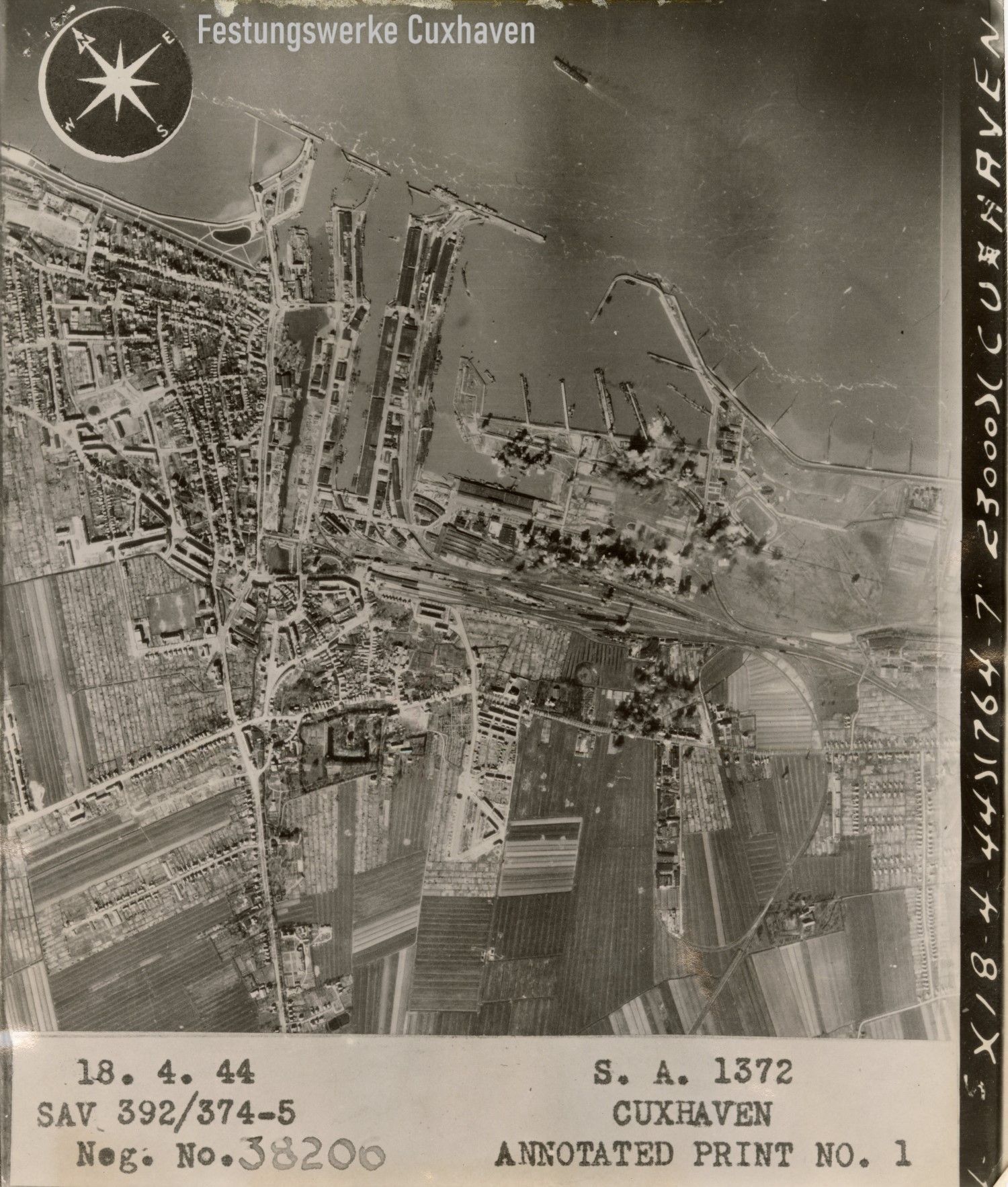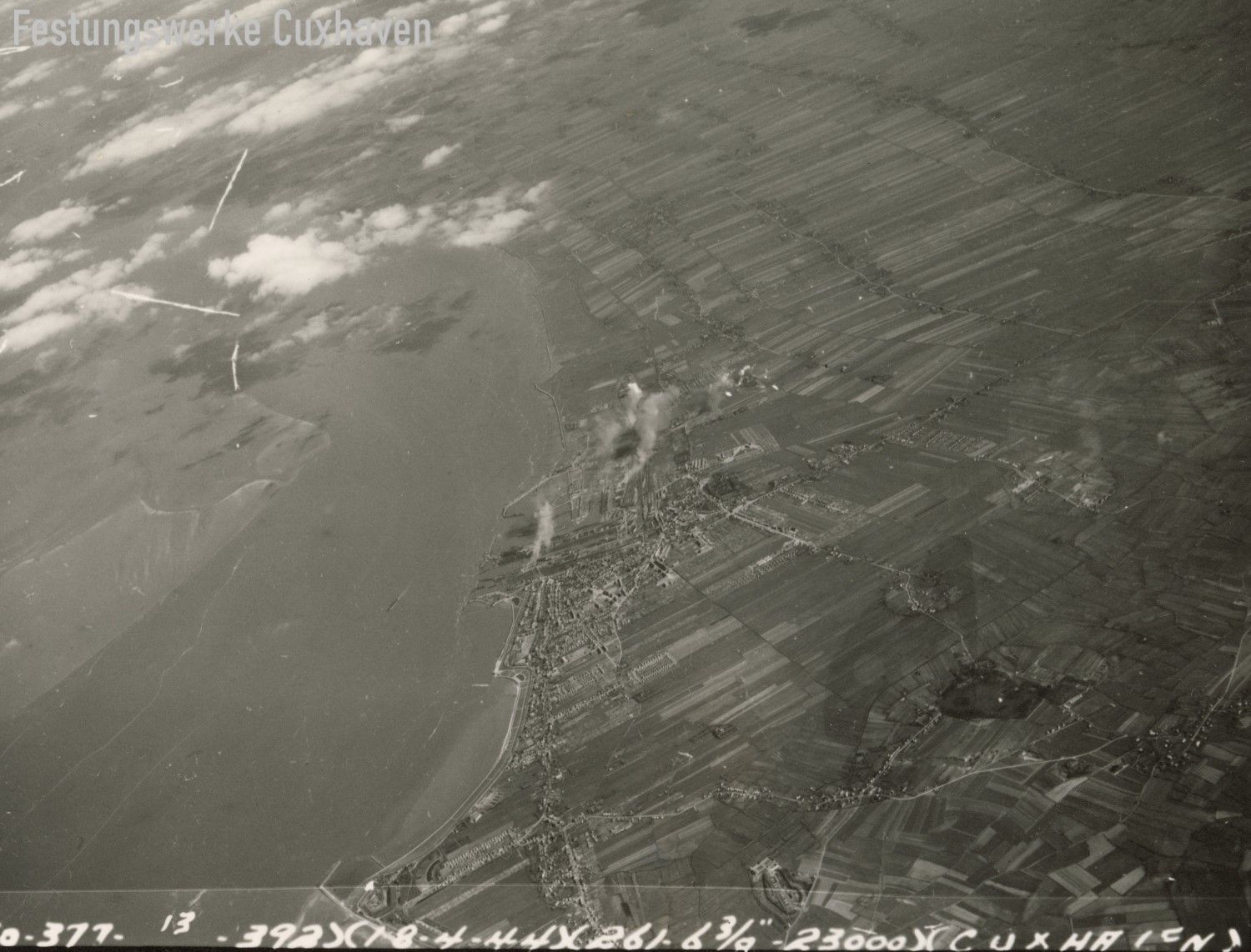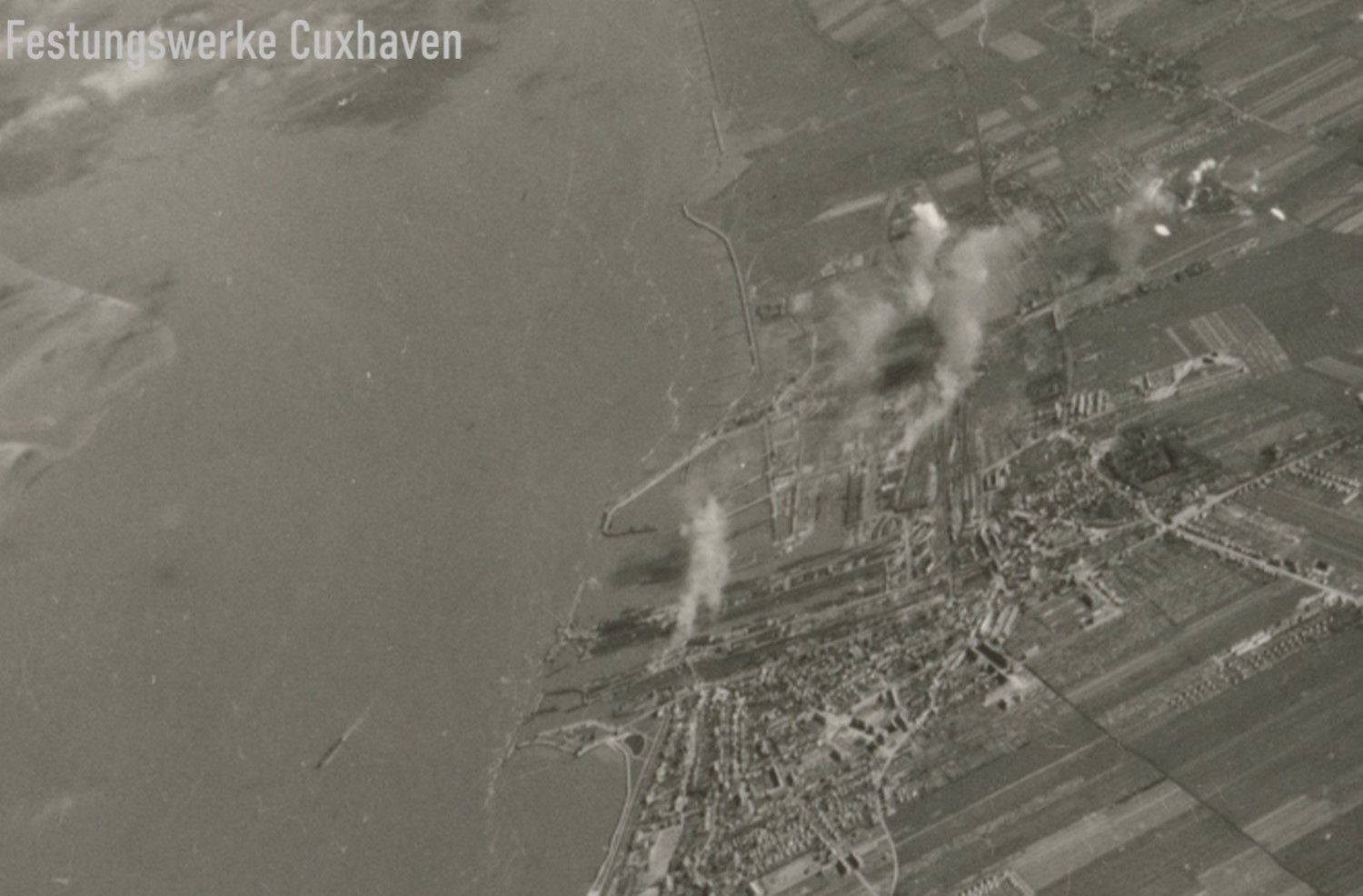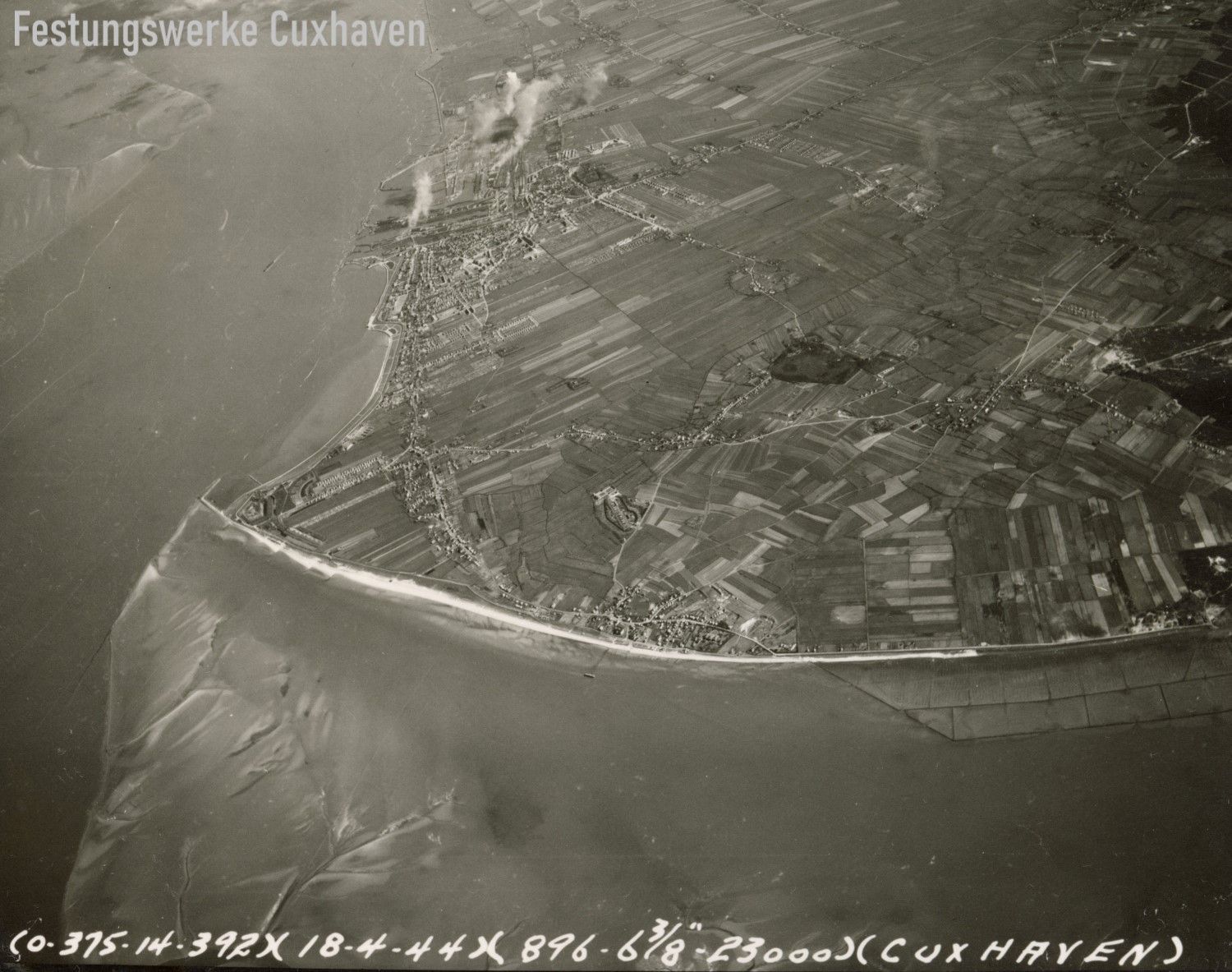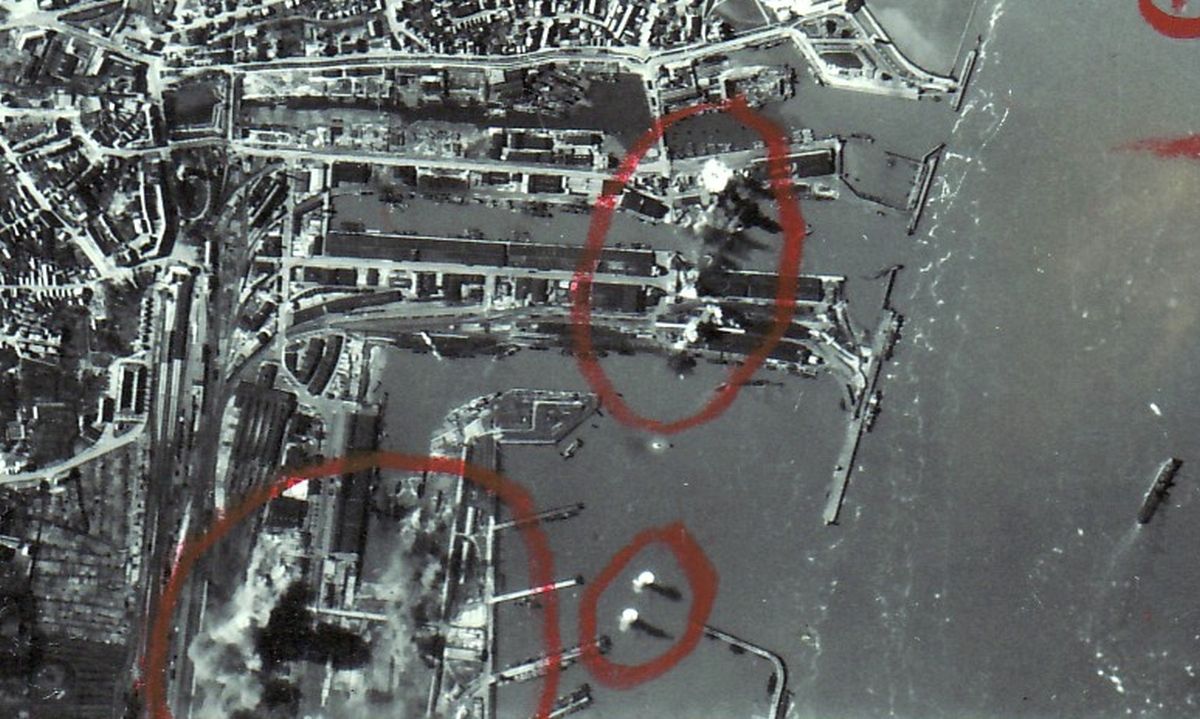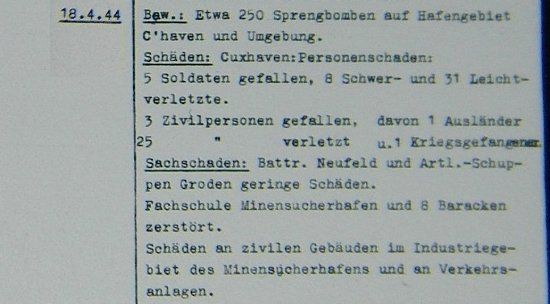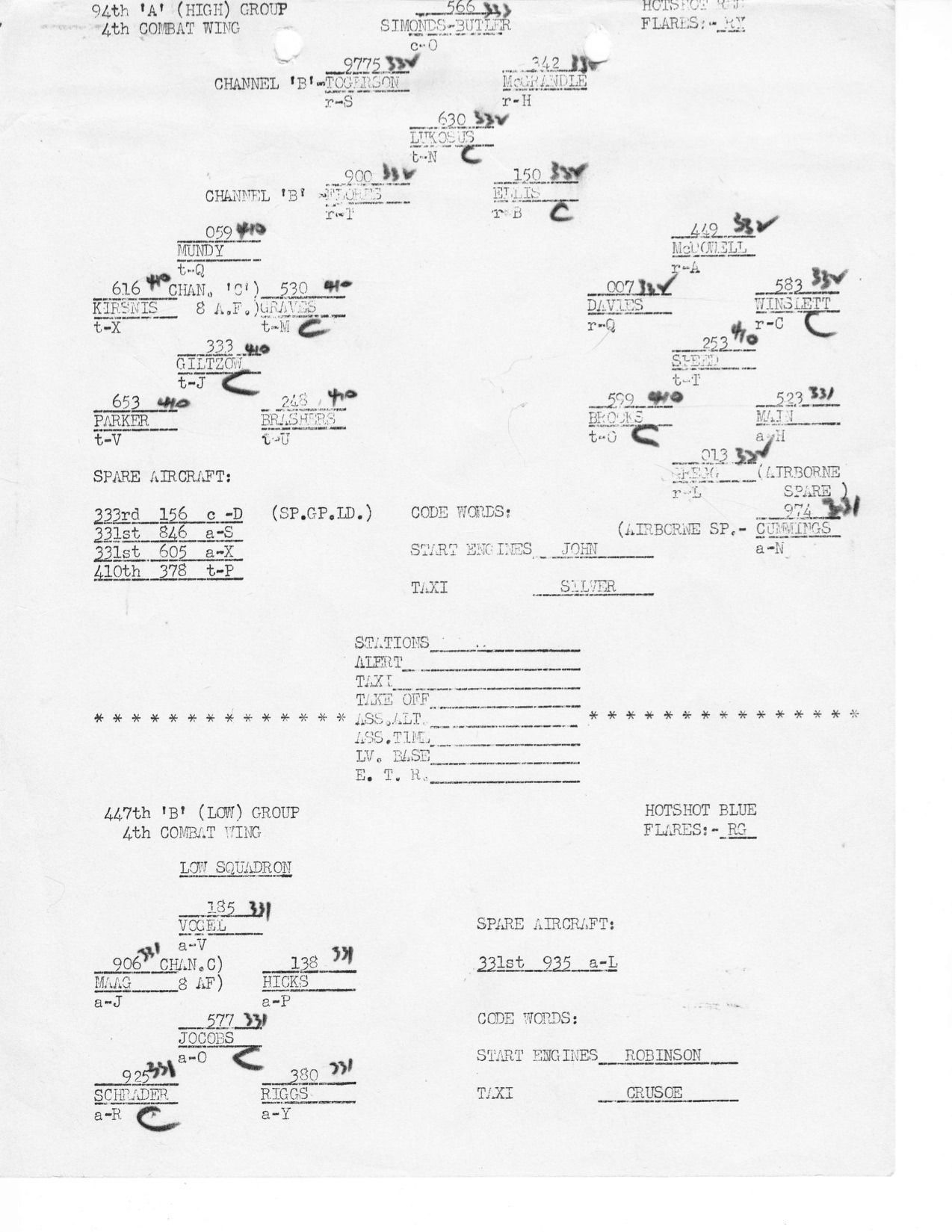
On this day, 12 heavy B 24 Liberator bombers from the 392nd Bomb Group attacked the port area of Cuxhaven with mission #67. Due to bad weather, the bomber fleet of the 8th USAAF Air Force was unable to reach its primary target on site, an airfield near Oranienburg in Brandenburg. Instead, the group was split up and attacked targets of opportunity in the surrounding area. To do this, some of the aircraft turned and headed northwest towards the coast. The target was building structures between the train station and the Amerikahafen in Cuxhaven, where the 12 B 24s then dropped 410 x 100 lbs. (45 kg) bombs from a height of around 6,000 meters. The bomb load hit large parts of the minesweeper port and the area on the Grodener Chaussee. 5 soldiers and 3 civilians were killed in the attack, and 25 people were injured, some seriously. Around 30 to 40 buildings were damaged, 8 of which were completely destroyed. There were further hits on quays, the railway tracks, roads and open areas. According to the aircraft crews, the anti-aircraft fire in the Cuxhaven sector was very precise, and several aircraft showed clear signs of being hit after landing. An attacking Focke Wulf 190 was successfully repelled and crashed after being fired on board. Several B 24 Liberators from the entire formation were lost during the return flight to England and presumably crashed into the sea. The formation was protected by escort fighters throughout the flight.
Excerpts from the present combat report of the 392nd/ Bomb Group
The final report on the results of the bombing of Cuxhaven
Cuxhaven aus ca. 6 - 8000 Metern Höhe. Die Bomber der 392th. Bomb Group sind bereits auf Kurs zur Heimatbasis gegangen. Oben erkennt man die Einschläge der schweren Bomben im Ostteil der Stadt.
Die meisten Sprengbomben gehen auf Land, entlang der "Neufelder Straße" nieder.
www.digitalhistoryarchive.com
These pictures were taken during the air raid on April 18, 1944. The carpet bombing began west of the mine depot in Groden and stretched across the minesweeper harbor until just before the old fishing harbor.
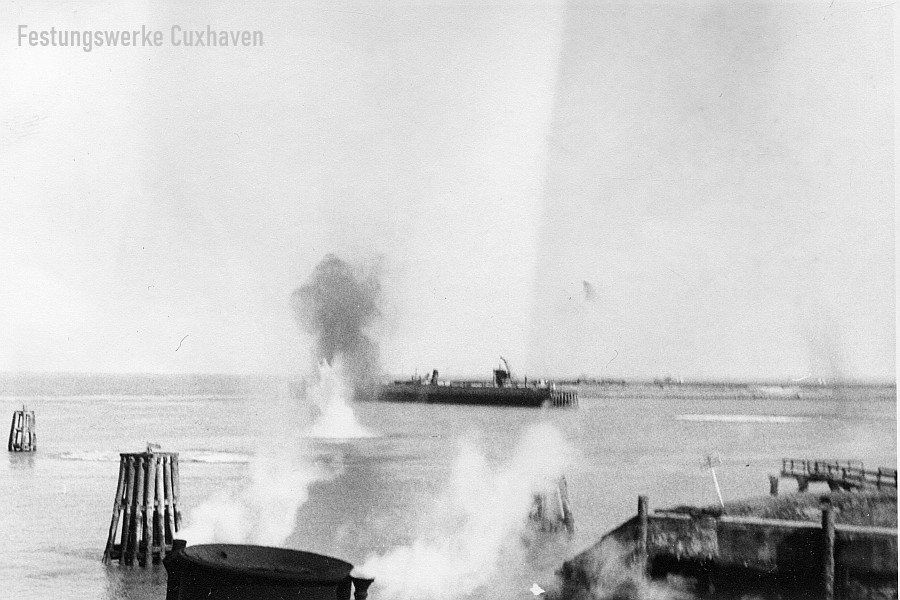
In the background is the eastern pier of the Amerikahafen. Various impacts can be seen in the water.Source: Cuxhaven City Archives 9e3-26110d
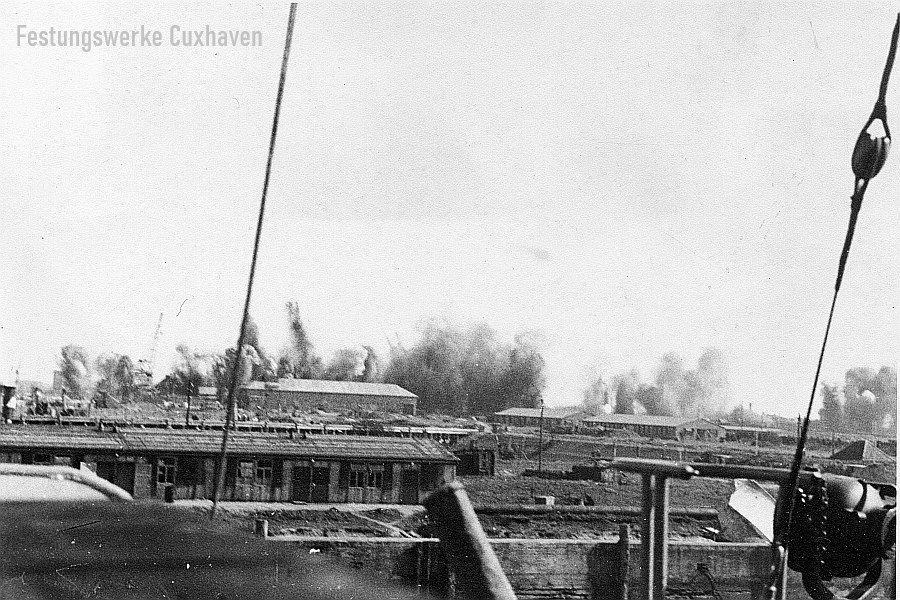
A massive carpet of bombs in the former barracks area of the minesweeper port (Amerikahafen).Source: Cuxhaven City Archives 9e3-26110h
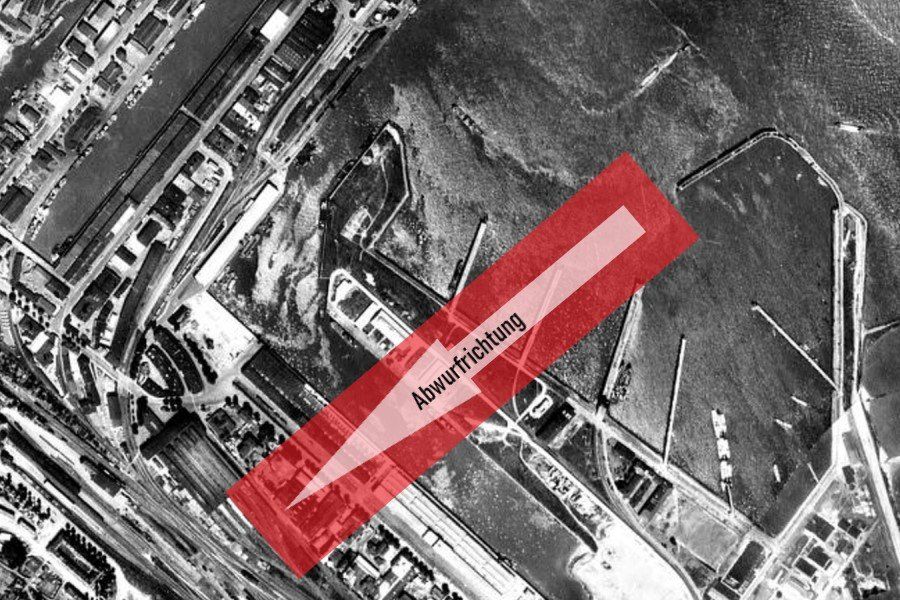
To clarify the view of the three photos. The photos were probably taken from a ship at the Lentzkai. In the past, access to the New Fishing Port was via the Amerikahafen and was dependent on the tide. The lock system to the outer harbor was only built in the 1950s.
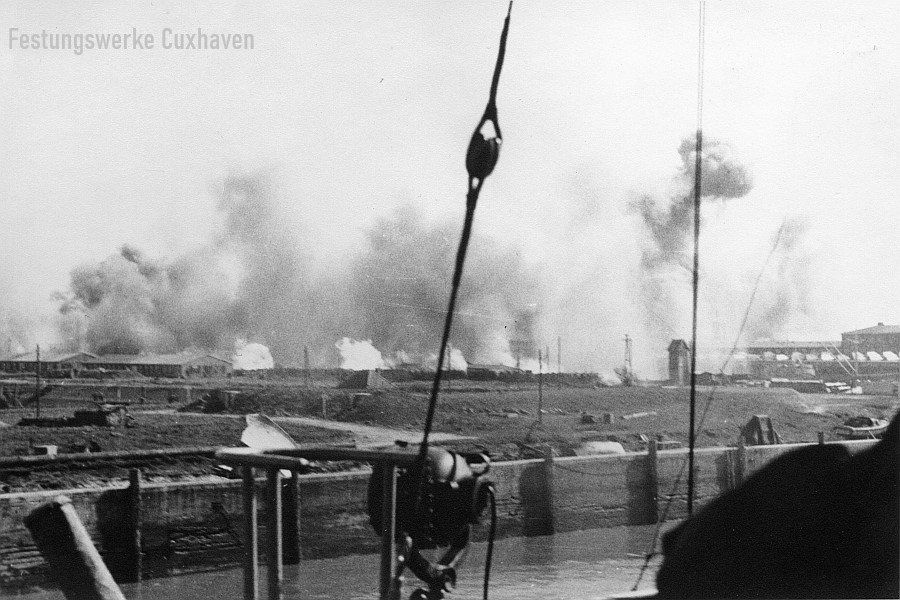
Lots of dust and various fires in the minesweeper harbor. On the right side are the buildings of today's fish halls 10 and 11 along the new fishing harbor. Source: Cuxhaven City Archives 9e3-26110c
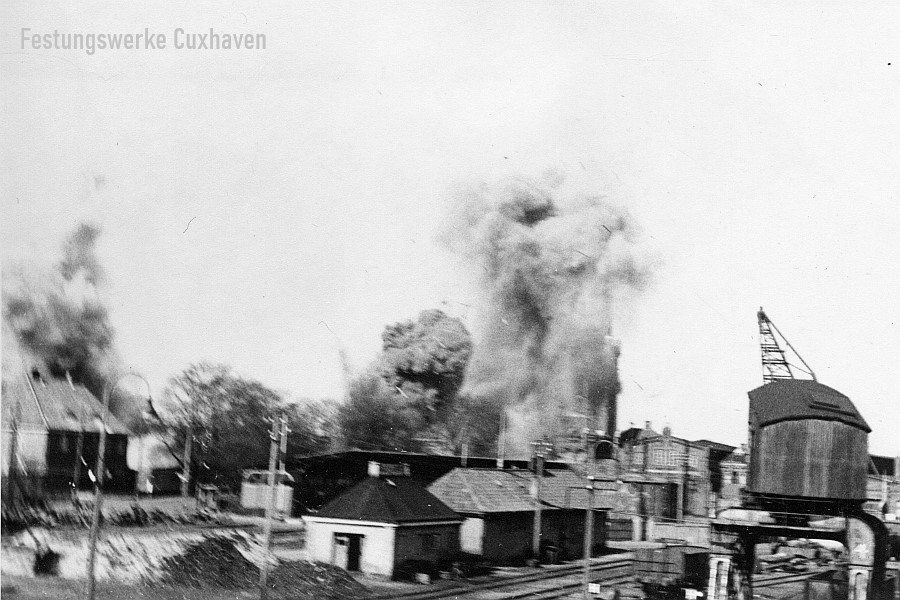
Strong explosions caused by bombs hitting the Hapag Hallen and Präsidenten-Herwig-Straße. To the right of the large explosion cloud, the tower of the Hapag Hallen can be seen in silhouette.Source: Cuxhaven City Archives 9e3-26110f
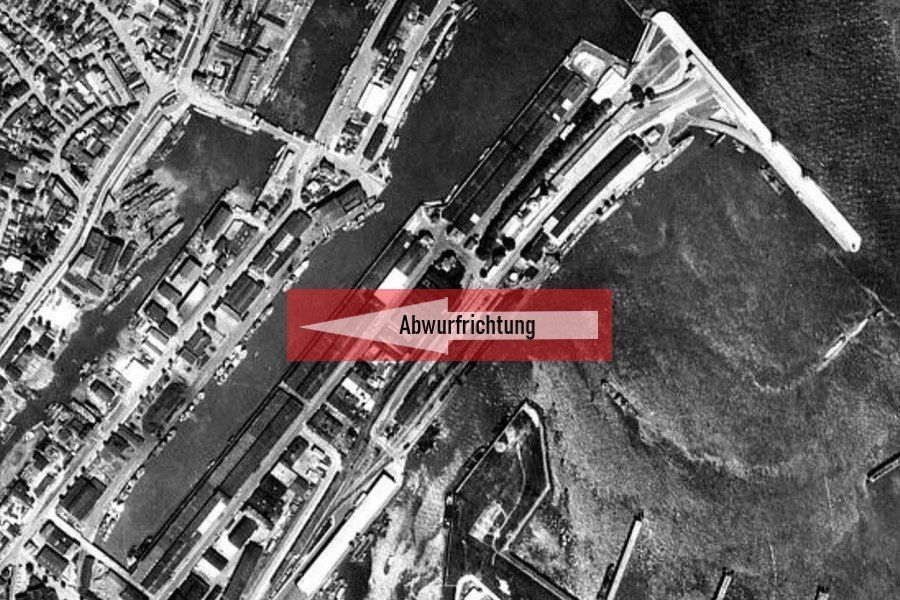
To clarify the view of the three images
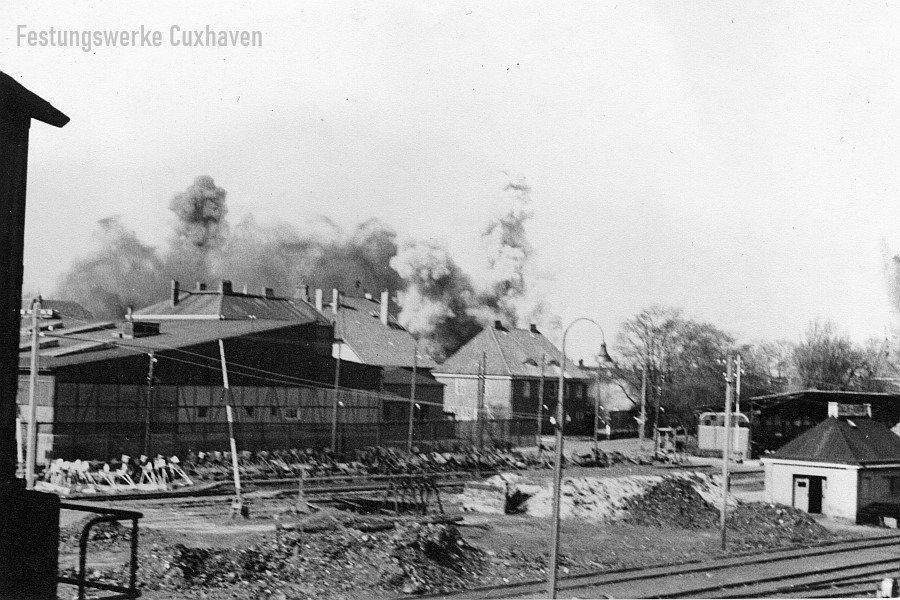
Heavy explosions at the Lübbertkai on the other side of the Hapag Halls.Source: Cuxhaven City Archives 9e3-26110a
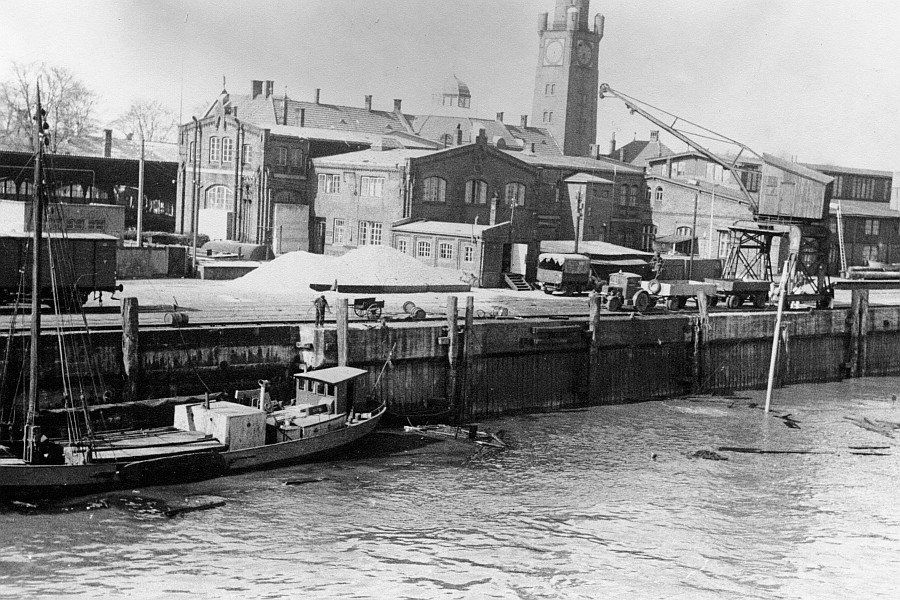
Shortly after the air raid, a sunken ship after a direct hit at Lentzkai.Source: Cuxhaven City Archives 9e3-26110i
Die beiden Aufnahmen geben die Einschläge der oben in den Fotos gezeigten Einschläge genau wieder.
Quelle:Annette Tison/USA
USAAF mission report
The following report is from pilot 2nd Lt. Robert V. Pardue, of the 579th Sqdn. After flying for 8 hours, our squadron was assigned to Brandenberg, about 40 miles west of Berlin. Shortly before the attack, we encountered a thick layer of clouds a few seconds before the bombs were dropped, which forced us to abort. The formation was then broken up and the mission was now to fly attacks on targets of opportunity. Fortunately, there were no enemy fighters near us at that time. We regrouped and headed back west. We selected a secondary target nearby, but shortly before the attack a formation of B-17s raced toward us. This had already been eliminated. Finally, we bombed ships in the harbor of Cuxhaven. The flak up to that point was scattered but fairly accurate. Over Cuxhaven it was moderate, but we got some precise flak hits from boats and ships in the harbor.



